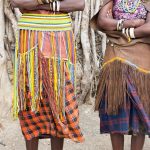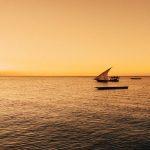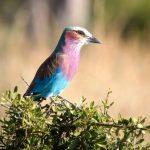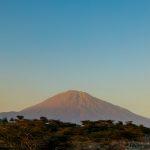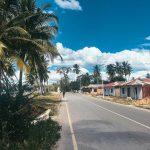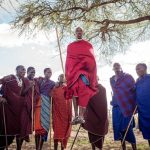Tanzania’s Southern Circuit is often overlooked in favour of the popular northern circuit which is home to some of the country’s most famous national parks and game reserves. However, if you’re looking for an experience of Tanzania that will be far less crowded and more authentic, this area of the country is a fantastic place to explore.
Enjoy a safari in the Mikumi National Park before heading into the Udzungwa Mountains National Park for some hiking or admiring the scenery in Morogoro. In this article, we share our top recommendations for some of the best places in Tanzania’s Southern Circuit.
Mikumi National Park
96 miles south of Morogoro and north of the Selous Reserve lies Mikumi, the most accessible of all of Tanzania’s national parks. Mikumi National Park has the attraction of being an easy driving distance from Dar es Salaam with a couple of good options for accommodation, which makes it a fairly inexpensive option for a self-drive weekend safari in the scenic wide open savannah.
The park actually straddles the highway near the Uluguru Mountains south of Morogoro, and offers the chance of a brief safari thrill for anyone travelling through by bus or truck. Unfortunately, vehicles used to thunder through this 50km stretch heedless of the speed restrictions, and road kill has been a major problem. This has recently been addressed with the introduction of a number of brightly painted speed bumps that might increase the chance of seeing something still alive.
Wildlife in Mikumi National Park
Mikumi is remarkably the 3rd largest park in Tanzania, enclosed to the south and east with a semicircle of the Vuma Hills and Uluguru Mountains, rising to 2,743m. These look down across the wide, flat expanse of the Mkata flood plains, which provide a good spotting ground for a variety of larger animals.
Lion, leopard, elephant and buffalo range among the numerous baobabs and palms around the edge, while unusually large herds of up to 100 impala range across the plains. Towards the centre of the park, water collects into watercourses and swamps attracting hippopotamuses, as well as the odd monitor lizard and various water birds.
The close proximity to the northern border of the Selous means that a number of animals migrate between the two areas, including Lichtenstein’s hartebeest and African hunting dogs. The miombo woodlands in the southeast are also a stalking ground for sable antelope and families of shaggy white-collared Colobus monkeys, and herds of eland and small family groups of Greater Kudu may also be seen between these two areas.
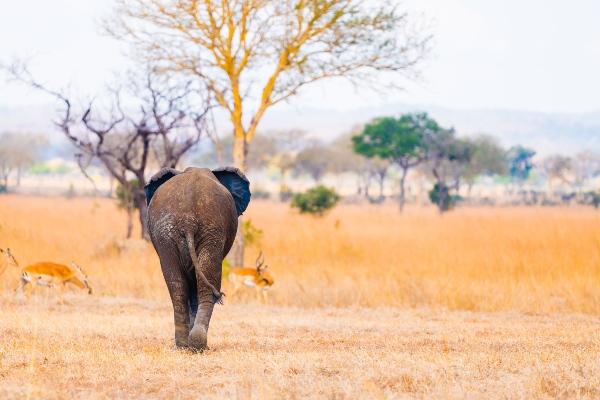
Morogoro
Morogoro town is a small but green and industrious agricultural market town in the lea of the Ulguru mountains with fresh mountain air, an abundance of fruit and veg and a relaxing, laid-back atmosphere. Its location between north and south, mid-way between Dar es Salaam and Dodoma, or on route to any westerly destination, makes it a bustling transit point and a welcome break for travellers passing through.
While there is little of specific interest in Morogoro town to merit a special journey, anyone exploring this route at an unhurried pace will find invigorating rural scenery to explore and a decent choice of accommodation alternatives. Others may wish to make the most of an opportunity to play a round of golf on the old colonial 9-hole course.
Beyond the town, the Morogoro region is a wild, rural expanse, with local cash crops of mainly coffee and sisal. The sisal is exported to Europe, the United States and China, and is used throughout Tanzania to make items such as rope, string, stuffing for mattresses and bags for coffee export.
The Kilombero Valley, just south of the Udzungwa Mountains and Udzungwa National Park, is especially rich in natural wildlife and grows an abundance of staples such as rice, maize, millet, fruit and vegetables, and sugar cane, which supplies two sugar factories in the valley. The local town of Ifakara is home to a number of extremely talented women who weave fabulous thick and colourful lengths of cloth on their looms and give visitors a far better price than they would get otherwise in Dar es Salaam.
History of Morogoro
Its central position and accessibility from the coast made Morogoro a colonial focus in the past. Typical indications of their residence remain evident in an old boma and numerous old churches, as well as wide streets lined with avenues of trees and second-storey balconies, along with a rather smart golf course in the scenic foothills of the mountains.
The town was the site of yet another exasperating evasion by German commander Paul von Lettow Vorbeck when he was pursued by Jan Christiaan Smuts, then commander of the British East African army, in 1916 during the East African events of WW1. Smuts, still entirely unaware of the distances over which von Lettow would elude him, was firmly smug in the opinion that his adversary would find himself trapped in Morogoro, because the Uluguru Mountains would inhibit their southerly progress.
The British troops were therefore mildly dumbfounded to discover the music that they had heard on approach was a mechanical piano playing in the Barnhof Hotel (now the rather dishevelled, government-run Savoy Hotel, near the railway station) and inside they found the Schutztruppe barracks horrendously defecated on and abandoned.
Economically, Morogoro struggled to find its feet until the middle of the twentieth century, after suffering the devastating effects of nationalisation on its factories during the 1970s. Although a familiar sense of dog-eared disintegration still clings around many of the old colonial stone buildings and crossroads, today its tree-lined streets are shady and cool, and the dusty roads are known to probably every transit lorry in the land.
The town now thrives on its popular reputation as a central agricultural market; the largest and most well-favoured market for fresh produce in the country. The old soap, oil and canvas factories that closed in the ‘70s have also recently re-opened under new schemes for privatisation. Now, this small town supplies the greatest proportion of its wares to vendors in Dar es Salaam.
What to See and Do in Morogoro
One of the main joys of Morogoro is its proximity to the Uluguru Mountains, which rise up around the southern reaches of this little town and provide excellent ground for easy forays into the unspoilt countryside.
There is also the very unusual and worthwhile botanical garden called ‘Rock Garden Resort’, which although small and largely untended, remains an impressively lasting gift from thoughtful Japanese benefactors. A minimal entrance fee allows you to follow the few paved stone paths through this strangely both natural and nurtured botanical ‘rock’ garden at leisure.
The paths lead to a bubbling river that dances through vast rock boulders, and parties of mothers and children wash and play beneath the pleasant shade of the palms and natural woodlands. It is a good place to relax if you have time on your hands, and is also the best option for anyone with their own tent to pitch in one of their clean and picturesque camping sites.
There is a café just inside the entrance gate, providing drinks, snacks and taped music in a friendly atmosphere. To get there, follow Kingalu Road southwards past the post office, just over 1 km beyond the Morogoro Hotel, and the Rock Garden Resort is signed on the right.
Guides for further excursions into the Uluguru Mountains can be arranged through the Rock Garden Resort or through Morogoro or Oasis Hotels. Anyone visiting the rock gardens may then find themselves inspired to climb higher and discover the even finer waterfalls and beauty that lies beyond.
Guides can be arranged for walks and hikes to popular destinations such as the old German villa called ‘Morningside’ in a scenic forest clearing just a couple of hours’ walk from the town. To get there is an interesting route from the town centre, following Boma Road southwards for about 10km and passing the old German Boma on the way, then meandering along the hill path past trees and streams.
Udzungwa Mountains National Park
The Udzungwa Mountains National Park is a sumptuous forested reserve that has recently been declared the sacred preserve of hikers and walkers. The land is ancient; a portion of the Eastern Arc mountains pushed upwards by faulting in the earth’s crust millions of years ago, and its steep slopes preserve a rare tropical forest that is home to a realm of unique plants, birds and animals.
It is also the only area in Tanzania where the forest cover remains unbroken from the lowlands all the way into the high mountain canopies. These forests are remarkably unspoilt; a wilderness of extremely beautiful woodland routes – with no driving tracks at all.
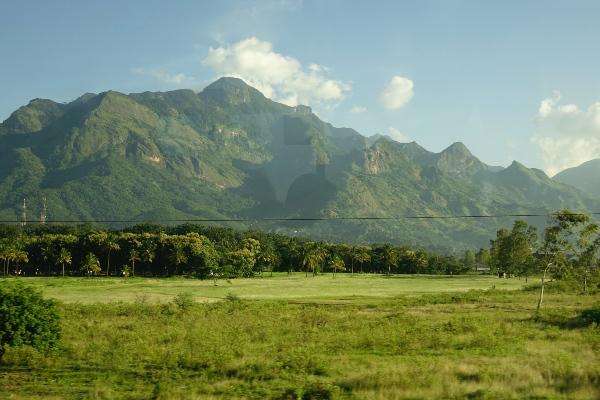
Udzungwa Mountains National Park – History
Udzungwa Mountains National Park is the most recently gazette
d of Tanzania’s National Parks, although it has been a forest reserve since the British created the Mwanihana and West Kilombero Scarp reserves in the early fifties. The park covers 1,990 sq km, almost one-fifth of the 10,000 sq km that comprises the Udzungwa mountain range, and is bordered by the Great Ruaha River to the north and Kilombero Valley to the southeast.
The present park was discussed for a decade before its creation in 1992, and is the first national park to be declared on the merits of its forests rather than animal population.
The base of these mountains dates from 450 to 650 million years ago, and the dense tropical forest that covers the mountain is thought to be a pocket of vegetation preserved from the time of the Gondwanaland supercontinent that existed up to 30 million years ago. Leaping forwards through the spectrum of time, archaeological finds around this area and Isimila have unearthed Stone Age hand axes and tools that were carefully crafted by hunter-gatherers.
The somewhat limited archaeological study that has been carried out here also provides evidence of a major migration through this area during the 1st and 2nd centuries, during which iron-working Bantu tribes progressed eastwards and displaced native hunter-gatherers.
Later, the Wadzungwa tribe, one of the 6 sub-groups of Hehe people who resisted German colonisation for seven years before the Maji Maji rebellion, were pushed out of the Iringa area by their fellow tribesmen and took up residence on side of the mountain. From the position of weakness that saw them succumbing to the pressure to move, the Wadzungwa found themselves in a stronger position around a richly fertile mountain, watered with abundant rain and spring source rivers. Their name means ‘people who live on the side of the mountain’, and the name Udzungwa has probably evolved as a result of another linguistic corruption by German interpreters.
Such a naturally attractive area has not been overlooked by other tribes from different areas and has attracted a large migration of tribes including the Wapogoro, the Wabena from the Upper Kilombero valley, some WaChagga from the region around Kilimanjaro and others. The people on the Eastern side of the mountain believe in a mountain god they call ‘Bokela’, and they use certain regions of the park for sacrifice and worship, especial
ly during hard times such as drought, disease and famine.
There was great unease when TANAPA started to assess the mountains, as it was thought that Bokela would be offended if the area was to be farmed or used for logging. Happily, it is now widely believed that Bokela is contented with the present situation, and supports this conservation of his mountain.
The late development of the national park has meant that it has benefited from recent TANAPA and CCS (Community Conservation Services) policies that take account of the people that will be affected by the conservation measures. The Udzungwa local communities have therefore not suffered quite as drastically as their country people surrounding previous national parks, and they have been party to a new policy of communication, consultation and compromise with regard to the implications the new restrictions will have on their lifestyle.
Local people have traditionally relied on the forests for centuries, using the wood for building, fuel, medicines, household utensils and weaving materials, honey gathering and utensils. Bamboo and reeds are used to make baskets for carrying agricultural produce, and animals such as the bush pig, tree hyrax and forest antelopes have traditionally been hunted for protein.
Since the national park was established, local people are allowed into the forests on Fridays and Sundays to collect dead wood for cooking and grass for thatching, but any form of axe or knife is prohibited within the boundaries. If you are between Kidatu and Mang’ula on either of these days you will see scores of women of all ages emerging from the forests with vast bundles of wood balanced on their heads. The load is often so great that it might exceed her own height and require the help of someone else to lift it into position. But once arranged, the women will often then carry it many kilometres back home.
The WWF is supporting an extensive reforestation program to educate and encourage the community to plant trees and seedlings, for both fruit and wood, around their land. Another concession grants those with practical knowledge of traditional medicines a three-month pass to gather the required ingredients from the forest.
There is a good atmosphere in this local enclave, slightly reminiscent of the mountain-dwelling communities around Kilimanjaro and Lushoto in the Usambaras. The mountains obviously once attracted missionary zeal, and there are a number of schools and various denominations of churches dotting the steeply sloping hillsides.
Yards are well-kept, and gardens grow fruit and flowers for decoration. Fat chickens and bright-coloured khangas give a good air of contentment and well-being here, and the road passes high numbers of lime stacks for burning limestone, showing a growth in construction and handmade housing.
Hiking in the Udzungwa Mountains National Park
Of the five official trails, just two bring walkers to the spectacular 170 m drop of Sanje Falls, with colourful and long-ranging views of up to 100km across the Kilombero sugar plantations and mosaic of grasslands from the top. The areas around the Sanje Falls become an incredible blur of butterfly colour after the rains in December, April, May and June, when flowers and air alike are often filled with hundreds of Swallowtails and Blue Salamis.
Another trail leads up to Mwanihana’s peak; a demanding but rewarding hike that demands a good degree of fitness from those who choose to climb. The highest peak of all is Luhomero, reaching 2,576 m (8,587 ft), above sea level, a distance requiring two nights and three days to climb there and back.
A number of rivers, streams and waterfalls make their way down these slopes into the Great Ruaha River, accumulating enough velocity to power the majority of the country’s electricity from the hydroelectric turbines at Kidatu and irrigate the crops to the south.
Rare Species in the Udzungwa Mountain National Park
Among all the species of wildlife in the Uzungwa forests, several have been found that are unique to this area.
Red Colobus Monkey
The endangered Iringa (or Uhehe) Red Colobus Monkey (Colobus Badius Gondonorum) is found here, and a much more rare and shy Sanje Crested Mangabey (Cercocebus Galeritus Sanjei), discovered in 1979 as a result of an unusual encounter by two wildlife ecology researchers from Dar es Salaam University. While collecting plants in the forest, they heard a strange sound that seemed to resemble a Mangabey monkey call, but as the next nearest populations of Mangabey are thought to be limited to those in forests in Southern Kenya, the researchers imagined that they were suffering hallucinations.
However, their Tanzanian guide described the animal that they had heard, although he only knew it as ‘n’golaga’, the Swahili name for the species, and clearly distinguished it from a colobus, vervet or Sykes monkey, or a baboon. When he took them to find some n’golaga in the forest canopy the next day, the researchers glimpsed the first sight of this unique species of Mangabey in the early morning mist.
Unlike the Kenyan species, the Sanje Mangabey has a pale face and light grey body, and stands about 0.75m tall, excluding its long tail. But the researchers wanted to get a better look and were delighted when their guide took them to see a tame n’golaga which had been adopted by local children after their father accidentally shot her mother when he mistook her for a yellow baboon.
The researchers knew that this species was unique, and were even more excited to discover its unusual tufty fringe, which seemed to indicate a very distinguished strain of Mangabey, until it became clear that the children had styled her Mangabey crest an extreme haircut, to keep the hair out of her eyes.
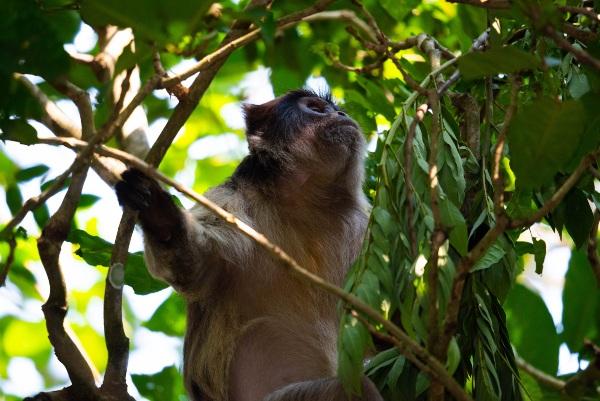
Udzungwa Forest Partridge
The other extremely rare species unique to the Udzungwas is a bird, the ‘globally threatened’ Udzungwa Forest Partridge, which was first recognised as a significant, unusual species of partridge in July 1991.
Legend tells how a researcher living in the forest had just devoured his partridge supper when, on closer inspection, he realised that the bird was unfamiliar, and for a time became concerned that he might have eaten the last one. Fortunately, although still rare in the Udzungwa forests, the Partridge has since been spotted more frequently in the west of the National Park, and recently also near Luhomero Mountain.
Rare Birds
The Udzungwa Partridge is just one of many extremely rare bird species in this region, such as the Iringa Akalat (Sheppardia Montana), mainly spotted between 1,600 and 2,400 metres in regions around the outskirts of the National Park. There’s also the White Winged Apalis, (Apalis Chariessa), which may be seen feeding among other birds on the forest floor.
The recently discovered Rufous red-winged sunbird (Nectarinia Rufipennis) was identified here in 1981, and is more common in the forests between 600 and 1,700 metres. It joins two other very rare species of sunbird in the Udzungwa forests, the Amani (Anthreptes Pallidigaster) and the Banded-green sunbird, (Anthreptes Rubritorques).
Other rare species exist in the Udzungwas in denser populations than found elsewhere, such as the Dappled Mountain Robin (Arcanator Orostruthus) the Olive-flanked ground robin (Cossypha Anomala), the Black-backed Cisticola (Cisticola Eximus) and the Red-Capped Forest Warbler, (Othotomus Metopias).
Another pretty bird common to the area is the red-brown-headed Mrs Moreau’s warbler, (Bathmocercus Winifredi), named by the highly acclaimed African ornithologist R.E Moreau after his wife, Winnifred. The Moreaus were also responsible for naming another warbler after a family member, when they called a small tail-wagging warbler after their daughter, Prinnia.
Reptiles and Amphibians
Five amphibian and reptile species have also been discovered to be unique to the area, including a new species of toad, a tree frog, a chameleon, a forest gecko, (Cnemaspis Uzungwae) and a skink. The tiny Udzungwa Puddle frog, with its distinctive band across its eyes, was distinguished and recorded in 1983.
If you’ve been inspired to explore the Southern Circuit of Tanzania, Tanzania Odyssey is a specialist tour provider that can help you to plan a tailor-made tour of the country that offers an unforgettable experience of this part of Africa. Take a look at our southern Tanzania tours or get in touch to find out more about how we can help you plan your trip.

